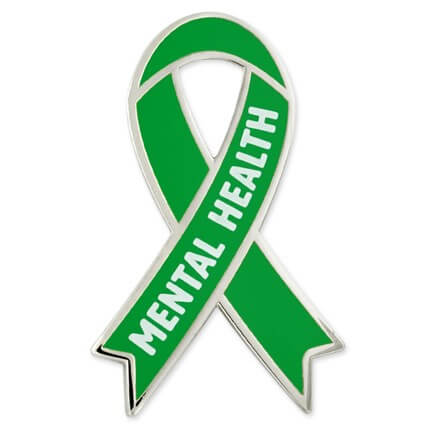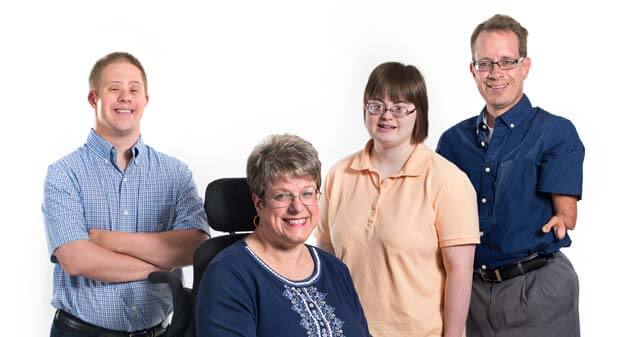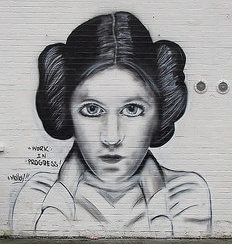- The Ultimate Guide to Journaling: How To Teach Expressive Writing - June 13, 2022
- Journaling: How To Use Writing To Support Your Mental Health - May 27, 2022
- How To Honor National Mental Illness Awareness Month With Action - October 3, 2021
Last Updated on October 23, 2024
My first installment for a series of articles about mental illness and mental health care for Life At The Intersection was an overview of the wide-ranging social and economic impact of mental illness. The subject of this second installment is an easy choice—stigma.
Would you make fun of these people? Their challenges are obvious.
Would you make fun of these people? Their challenges are invisible. This is what mental illness can look like.
What is stigma? The Mayo Clinic defines it this way:
Stigma is when someone views you in a negative way because you have a distinguishing characteristic or personal trait that’s thought to be, or actually is, a disadvantage (a negative stereotype).
Stigma is the #1 reason people do not seek treatment for their mental illness. Stigma is the #1 reason people with mental illness are laughed at, misunderstood, bullied, and discriminated against.
Words Matter
Our social vernacular is peppered with terminology that we have forgotten is hurtful to people with a mental health diagnosis. After you have read this, pay attention to how often you hear people use words such as crazy, nuts, insane, wacky, looney, or nutjob. People talk flippantly about needing to be put in a padded cell or joke about killing themselves if some mundane thing happens. If this strikes you as overly sensitive or unnecessarily politically correct, I ask that you adopt a position of empathy toward those you have been institutionalized. Or who have attempted to die by suicide. Or for the loved ones of those who succeeded.
The Root of Stigma—False Beliefs
The National Institutes of Health break down an explanation for stigma into a three-part process:
- Stereotypes, which create a negative belief
- Prejudice, which is an agreement with that belief
- Discrimination, a behavior response to that belief
Stigma often leads to discrimination. Discrimination can be obvious and direct, such as someone making a negative remark about a person’s mental illness or treatment. Or unintentional or subtle, such as someone avoiding a person because it is assumed he or she could be unstable, violent, or dangerous due to mental illness.
Some of the harmful effects of stigma on those with a diagnosis include:
- Reluctance to seek help or treatment
- Lack of understanding by family, friends, co-workers, or others
- Fewer opportunities for work, school or social activities or trouble finding housing
- Bullying, physical violence or harassment
- Health insurance that doesn’t adequately cover your mental illness treatment
- The belief that you’ll never succeed at certain challenges or that you can’t improve your situation
Stigma is an Opponent We Can Defeat
In her 2017 article “9 Ways to Fight Mental Health Stigma,” NAMI’s Communications Manager Laura Greenstein offers simple suggestions for igniting change:
-
Mural of actress Carrie Fisher, former NAMI spokesperson. Talk Openly About Mental Health. One of the most influential movements of the last few years is the courage of celebrities to “come out” about their diagnoses and struggle with mental illness, such as depression, panic attacks, anxiety disorder, OCD, and bi-polar disorder I and II. These brave celebs include Ryan Reynolds, Dwayne Johnson, Kristen Bell, Carrie Fisher (who was a spokesperson for NAMI), Demi Lovato, Mariah Carey, Lena Dunham, Prince Harry, John Hamm, Catherine Zeta-Jones, and Brian Wilson.
- Educate yourself and others
- Be conscious of language
- Encourage equality between physical and mental illness
- Show compassion for those with mental illness
- Choose empowerment over shame
- Be honest about treatment
- Let the media know when they’re being stigmatizing
- Don’t harbor self-stigma
Advocacy: What Works and What Doesn’t

- Anecdotal evidence suggests that protest campaigns have been effective in getting stigmatizing images of mental illness withdrawn.
- Protest is a reactive strategy; it attempts to diminish negative attitudes about mental illness but fails to promote more positive attitudes that are supported by facts.
- Education provides information so that the public can make more informed decisions about mental illness. Research shows that persons who demonstrate a better understanding of mental illness are less likely to endorse stigma and discrimination.
- Stigma is further diminished when members of the general public meet persons with mental illness who are able to hold down jobs or live as good neighbors in the community. Opportunities for the public to meet persons with severe mental illness may discount stigma.
The Time for Action is Now
In addition to Laura Greenfield’s suggestions, there is plenty you can do to end stigma and bring a healthy awareness to mental illness. Here are a few more ideas.
StigmaFree is NAMI’s campaign to end stigma and create hope for those affected by mental illness. Through powerful words and actions, we can shift the social and systemic barriers for those living with mental health conditions.

Wear your meds. This campaign is daring. Wear your meds are buttons, each button showing an image of a commonly prescribed medication to treat mental illness. Anyone who wears one of these buttons is signaling that they’re open to sharing their personal story of how the medication helped. It’s a powerful action and requires courage. Can you do it?
Shirts, lapel pins, buttons and more. Wear your support for mental health awareness. A wide variety of clothing and accessories promote awareness. Be prepared to address the issue and answer questions. These items can be purchased from many online stores, including Amazon.
MakeItOK. The MakeItOK campaign, specifically designed to reduce stigma, is based in St. Paul, Minnesota. The website offers extensive resources, such as posters, flyers, a PowerPoint presentation, brochures, tip cards, and more.
[Are you ready? Read Make a Difference with Mental Health Activism.]
Read Trish Lockard’s Series on Mental Health Awareness
Taraji P. Henson’s Passion for How to Impact African American Mental Health
- Think the Pandemic Was Hard? Consider the Impact on Those With Mental Illness
- With Mental Illness You Won’t Get a Casserole
- Stigma: A Thorn in the Side of Mental Health Care
- 12 Creative Ways to Support Mental Health
Like the creative Wear Your Meds campaign? Browse more examples of artistic activism.
At the Intersection of Activism and Illness
How to Get Started in Activism







Pingback: With Mental Illness You Won’t Get a Casserole • Life At the Intersection
Pingback: How to Use Artistic Activism to Change the World
Pingback: At the Intersection of Ego and Creativity
Pingback: Think the Pandemic Was Hard? Consider the Impact on Those With Mental Illness
Pingback: Monday InLinkz Join us at 164 Senior Salon • Esme Salon
Pingback: Make a Difference with Mental Health Activism
Pingback: Suicide Prevention at the Heart of Activist’s Memorial Efforts
Pingback: The Olympics Open the Door to an Athlete Mental Health Conversation
Pingback: Journaling: How To Use Writing To Support Your Mental Health
Pingback: How to Honor Mental Illness Awareness Week with Action
Blessings to all. This is a confession. I must admit that I have contributed to stigmatization both in my personal and professional life. I am now empowered by the recommendations made, particularly with regards to language and empathy
Hi Nicole,
I’m glad you found this post. I would encourage you not to look back but to help reduce the stigma of mental illness in the future. We need everyone speaking out and normalizing the issue so those that need treatment will seek it. Thank you!